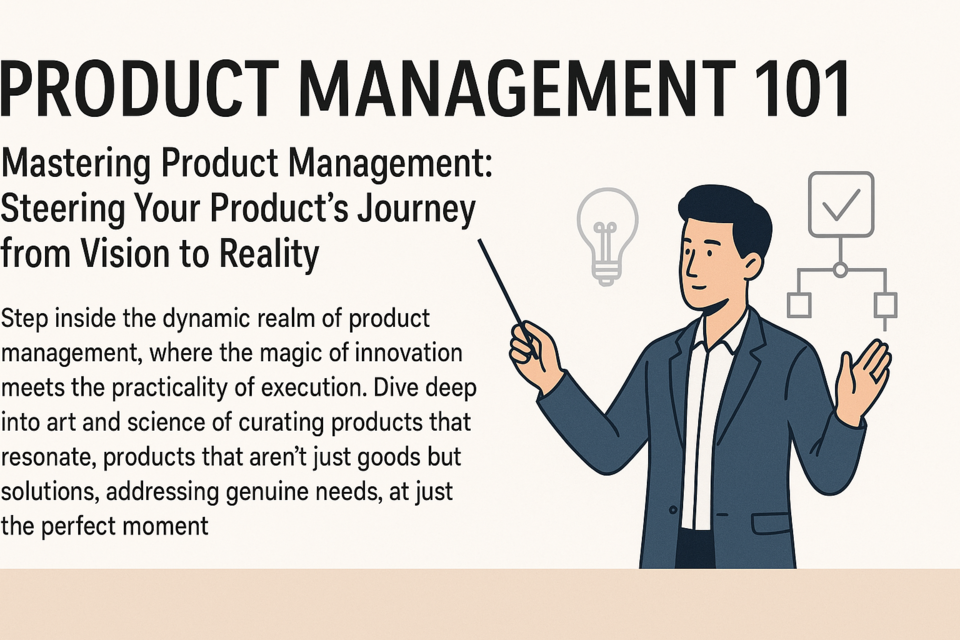Your consulting methodology is the system, process, and overall approach you use to develop the solutions to your client's problems. Consulting methodologies are a professionally designed framework of information and analyses. The analyses you develop should be based on a proven and structured system of tools and actions to resolve your client's issues in a beneficial manner.
Over time, your methodology becomes better and better with each consulting project you take on. It becomes a culmination of the best aspects of each report you have developed, which, over time, could be the best result you can provide.
By definition, a methodology is a set of tasks completed in a logical order. There are several business improvement methodologies that are commonly used. Existing methodologies contain tools that have been tested and proven to be effective within the business industry. This eliminates the need for you to develop your own tools and helps you gain efficiency in your own operations, where you can apply quality to other areas.
Lean six sigma is used as a business methodology for improving design and optimizing business processes. It focuses its improvement efforts using the DMAIC model which stands for design, measure, analyze, improve, and control.
Rapid Application Development methodology is used for design and testing of requirements prior to implementation of an application. It is generally used within software industries and is for information technology applications.
PRINCE2 (PRojects IN Controlled Environments, version 2) is a project management methodology used to manage a project through its life cycle. It has its origins in the United Kingdom, and the methodology focuses on quality management, quality control, and organization within project delivery, so that the end result aligns with the objectives of the organization.
Developing your own methodology for consulting will prove to be a valuable asset to the quality and efficiency of your work. Your methodology allows you to be focused and productive.
Your methodology should include some of the following tools. You can find hundreds of tools, simply by searching consulting tools on the Internet. These tools allow you to precisely analyze the specific problem for your client. By using multiple tools in your methodology, you are more able to prove the validity of your consulting.
-
A customer portfolio takes the client's strategic plan and evaluates their assets against criteria such as cost or risk.
-
A business environment analysis is a one-page summary document of the challenges managers see hindering them from reaching their goals.
-
A client employee portfolio is a one-page executive summary of each employee involved in the consulting project, noting how they work with the project, including key asset traits and strengths.
-
A customer needs map is a matrix document with an "x" and "y" axis that helps customers make decisions based on quality and impact factors.
A successful interpersonal methodology is based largely on interpersonal skills. Interpersonal skills make businesses successful and they are a core area for professional development. Knowing your style and working with confidence, and with a professional demeanor, can be a great help. The most important skill is the ability to get along with people. If you don't have that skill, any success you will have will only be temporary. As you work with clients, work to improve your interpersonal skills:
-
Be aware and try to understand the behavior of leadership and management.
-
Manage conflicts.
-
Work with key people who are difficult.
-
Develop effective relationships with your colleagues.
-
Manage teams whenever the opportunity presents.
-
Practice social skills.
-
Practice public speaking skills.
Most consultants have the technical skills for success. It's the interpersonal methodology that develops your business and makes you someone they want to work with. The larger the project and greater the size of the portfolio you are consulting, the more interpersonal skills impact your business. Miscommunication can have a significant impact on the delivery of your project. Interpersonal methodology includes building relationships.
Building good relationships involves helping clients to the best of your ability. This includes helping them with new programs, new projects, and business implementation. There are a number of techniques that will help you work with clients:
-
Continually communicate the company's goals.
-
Be careful to see the viewpoint of all stakeholders.
-
Balance your time between stakeholders.
-
Maintain a positive attitude.
-
Always provide them up-to-date information on your progress.
-
Always ask the client what can be improved, in terms of communication, for future working relationships.
You may find using tools, such as stakeholder interest matrix shown below, to determine where to focus your efforts when consulting. By determining who needs to receive the majority of your time, and who requires only minimal contact, you are more effectively able to manage your time as a consultant.
Understanding the personality styles of your clients and their employees, you are better able to develop a communication plan for your interaction. Communication is fundamental and key to project success. Sometimes communication fails, because team members who have information are unwilling to share it, viewing it as a source of power over other team members. It may occur because team members are unsure of who to share information with. Resolving communication problems relies on the ability of the consultant to establish and enforce communication standards. You will also need to engage with stakeholders, process owners, and customers affected by your consulting project. These people will engage with you at structured meetings, so it is important that these meetings take place regularly, and clearly convey information about the progress and development toward implementation.
Teams and groups
Your team and group methodology will consist of the common activities and documents that you use to facilitate the consulting experience. Team facilitation requires astute management of group dynamics and an understanding of timelines and constraints, and how they apply to the consulting project. Establishment of goals ensures team focus and provides a path to meeting the intent of your consulting report. As you facilitate these teams, you will apply many techniques to motivate the team members. Motivation requires different approaches for each individual. You will determine which factors motivate each team member, such as challenges, financial motivation, or promotion opportunities. If motivation suffers, the actions in your consulting report will suffer.
Team stages
As the consultant, you will work with a number of teams and individual employees. As you work with these groups, it is beneficial to remember the stages of team development. These will be applicable in your interactions with the team chosen by the company's leadership.
-
The Forming stage is characterized by members getting to know one another and setting the foundation for the project and team ground rules.
-
The Storming stage is characterized by conflict, as the team members begin to display their hidden agendas and bias.
-
The Norming stage is characterized by members agreeing to operations, and beginning to work together effectively.
-
The Performing stage is characterized by active work and accomplishment of goals.
-
The Adjourning stage is characterized by the disbanding of the team members through the completion of the project.
Team dynamics
Managing team dynamics will also be an important part of what you do as a consultant to manage the challenges of group interaction, including overbearing participants, reluctant participants, those who are productive versus unproductive, and the difficulties with decision-making, including group thinking, digression, or floundering. You need to recognize negative interaction, such as:
-
Poor communication resulting in lack of information
-
Dysfunctional behavior of personal issues, interpersonal problems, or hidden agendas that might require moving the individual(s) from the team
-
Poor leadership causes team dynamic difficulties when project leaders fail to recognize leadership styles must change depending on the experience, composition, skill set, and motivation of team members.
-
Project team member turnover occurs when team function is disrupted by routinely adding and removing team members.
-
Unclear and poorly developed goals lead team members to make separate interpretations of the desired result.
-
Lack of motivation may occur when individuals on the project view it as unnecessary, or give it a low priority.
Most of the implementation for the solutions you develop with clients is typically based on a team approach, instead of through individuals. This is because, collectively, teams make better decisions than individuals. Decision making tools provide a systematic approach for decision making, while encouraging creativity. Your team meetings encourage brainstorming and developing the best collection of possible solutions. Some of the most common team decision making tools and their functions follow:
-
The 5 Why Analysis determines the root cause of the problem by asking the question "why" five times in succession to reach the root of the problem.
-
Affinity diagrams begin with grouping different ideas on paper, or on a board, to help develop thoughts and arrange ideas.
-
Brainstorming is the process of creative idea generation by having individuals provide lists of problems, factors, and solutions.
-
Cause and Effect Diagrams determine the causes of a problem using where the causes (x) are shown, resulting in the effect (y), such as the example below.
-
Nominal Group Technique helps the project team reach a decision by asking team members to respond to questions posed by a moderator.
-
Prioritization Matrices help teams determine what the overall priorities are for a project.
-
Force Field Analysis helps a team determine the positive and negative aspects of a problem.
-
Interrelationship Diagram identifies key relationships, and how they are related, in terms of the cause and effect.
-
Kano Model identifies what the customer wants, based on normal expectations and exceeding expectations.
Again, these are additional tools that you will maintain in your consultant methodology collection. As you develop your tools, separate them into functional categories for reuse in other projects, such as quality improvement, project management, accounting, etc.
Organizational development
Along with the interpersonal interactions and those with teams and groups, the consultant is quite often utilized to help with organizational development. Implementing your methodology within an organization requires some understanding of the basic functions of an organization, and what it means to be a learning organization. Organizations are a group of people who coordinate their actions to create something of value. Creation is done in three stages: input, conversion, and output -- meaning that organizations take inputs, develop or process a product, and produce an output. Organizations consist of customers, shareholders, suppliers, distributors, and competitors. Organizational theory explains how organizations function, how they are affected by the environment, and how they affect the environment in which they operate. The environment in which you work as a consultant consists of the organizational structure, organizational design, and the organizational culture. In order to impact your strategy within the organization, you must understand how these concepts work together. The chart that follows will explain the basic processes under each of these three concepts.
Organizational structure includes:
-
The formal system of tasks and authority relationships that determine how resources are used to achieve organizational goals
-
The system that shapes behavior of the employees
Organizational change is the process where organizations move from their present state to the desired future state to increase their effectiveness. The goal of organizational change is to implement new or improved ways of using resources or capabilities, and to improve performance. This is where you come in as the consultant. You help them to design the structures necessary to implement your recommendations by development of contingencies, development of competitive advantage, developing core competencies, or developing a strategy. Your greatest challenge will be to manage the process of innovation and enhance organizational effectiveness. The greatest impact for innovation will be quantum shifts in new technology, or refinements in existing technology. As a consultant, you must manage innovation, creativity, and entrepreneurship, which are channeled through project management, cross functional tools, development of leadership, creation of new ventures, and the creation of a culture that supports innovation. In addition to supporting innovation, entrepreneurship, and creativity, you will assist the client company in managing conflict, politics, and power struggles. Typical sources of conflict arise from interdependence, bureaucratic factors, incompatibility with performance criteria, differences in goals and priorities, and competition for scarce resources.
Summary Reminders and Takeaways
You should recall that a methodology is a frame, structure, or set of tasks completed in a logical order. There are several business improvement methodologies commonly used as a best practices, including Lean Six Sigma, rapid application deployment methodology, and PRINCE2. Developing your own methodology for consulting will prove to be a valuable asset to the quality and efficiency of your work. Methodologies include tools, such as customer portfolios, which evaluate clients' strategic plans; business environment analysis, which is a summary of issues hindering management from reaching goals; the client employee portfolio, which is a one-page executive summary of each employee, telling how they impact the consulting project; and, finally, a customer needs map, which is a matrix document that helps customers make decisions based on quality and impact factors.
Interpersonal relationships are very important in allowing the client to meet your implementation recommendations at the highest level. Working with clients, continually communicate the company's goals. There are five stages to team development, which include forming, storming, norming, performing, and adjourning. Throughout each of these stages, team communication is vital. Team dynamics suffer if poor communication exists, or if there is dysfunctional behavior, poor leadership, project team member turnover, poorly developed goals, or lack of motivation.
There are a number of tools you can use to help teams reach a consensus and implement your recommendations. These include the 5 Whys Analysis, affinity diagrams, brainstorming, cause and effect diagrams, the nominal group technique, prioritization, and interrelationship diagrams.
Organizational development is a complex system of how the company functions internally to provide products and services for their stakeholders. Organizational structure is the formal system of tasks and authority relationships that determine how resources are used. Organizational change is the balance an organization makes to respond to market forces. The organizational culture is the values and norms of an organization and how people interact within the organization.






























